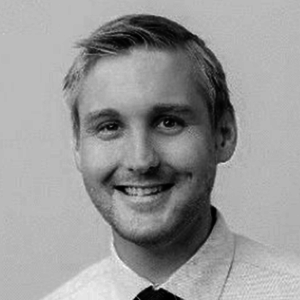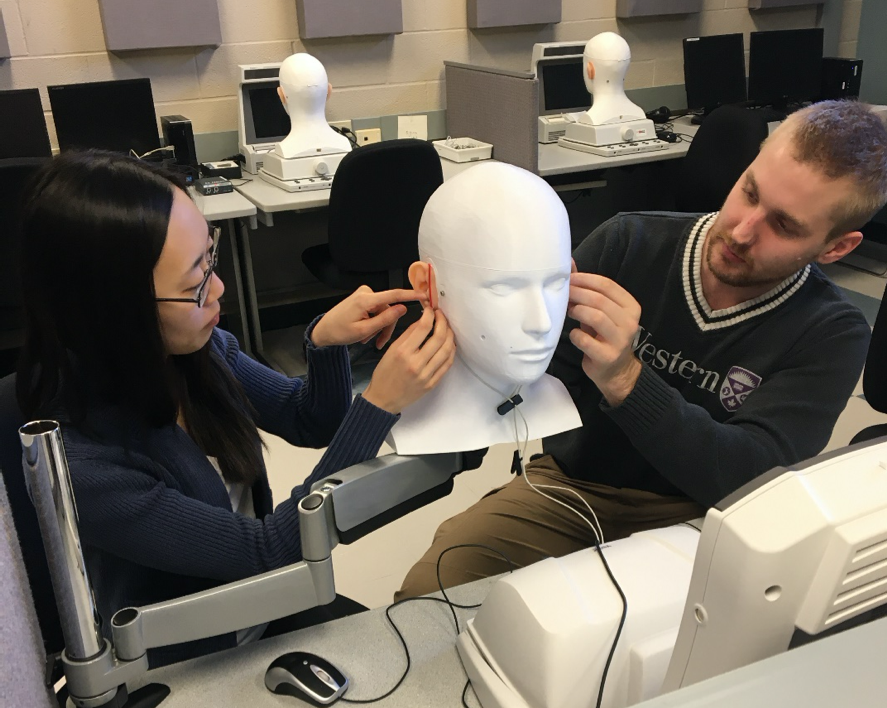Training & Product Learning with Simulation: A New Clinician’s View of the Benefits
AudiologyOnline: Why did you decide to pursue your audiology degree and why did you choose Western for your education?

Jared Billey: The main reason I choose to pursue audiology was that, like so many others, I witnessed firsthand how hearing loss can lead to friends and family withdrawing from social interactions with their loved ones. Many of us take for granted how the ability to communicate is essential to connect and fulfill our basic human and social needs. Discovering that this profession was dedicated, not only in treating hearing loss but also restoring communication through aural rehabilitation and counseling, I knew I wanted to be a part of it.
As a student pursuing a clinically focused profession with no previous direct experience, it was important to select an Audiology program which would allow the training I would need to excel in clinical practice. Western University’s Audiology program has always had the reputation for implementation of direct clinical applicability which made choosing their Audiology program clear for me.
AudiologyOnline: When were you introduced to simulation in your education?
Jared Billey: In my first year at Western, AHead Simulations and the Audiology Program at Western began working together for a mass implementation of the head simulator CARL. Immediately, the most appreciated fact of CARL was that it provided us with the ability to practice a variety of tests independently without the need for a classmate or volunteer. Logistically, it can be difficult to find people to practice on and the simulator allows us to practice on our own schedules.
AudiologyOnline: How did you make use of the CARL patient simulator?
Jared Billey: CARL provided us with a risk-free way of practicing. When conducting cerumen management, ear-mold impressions, and probe tube placement, it was important to build some level of skill as it can be dangerous practicing on people when you are new to a clinical procedure. Some of the head simulators were equipped with a camera which provided us with real-time visual feedback within CARL’s ear canal when practicing these skills.
CARL was also useful in learning the concepts behind more advanced electroacoustic tests and complex hearing aid fittings. CARL allowed us to perform high powered hearing aid fittings and to demonstrate several valuable learning opportunities regarding venting and feedback challenges that would not have been possible prior to CARL due to safety considerations. Having CARL gave us opportunity to practice In-The-Ear (ITE) and Completely-In the-Canal (CIC) hearing aid fittings and verification. We have several different types of earmolds, and ITE and CIC hearing aids that were customized for CARL’s ear shape which allows for real-ear measures of these types of custom products that would not otherwise have been possible. Recently, we had the addition of pediatric version of CARL (baby-CARL) which is especially appreciated as it allows us to develop our pediatric skills and develop confidence.
AudiologyOnline: What were the biggest assets to using simulation throughout your education?

Jared Billey: For myself, I most appreciated the fact that I could practice fitting, using different software, and running a variety of on-ear electroacoustic tests on nearly all brands of hearing aids and verification systems completely independently and on my own schedule. We know that real-ear measures are the gold-standard for hearing aid verification, and CARL makes it possible to allow students to put in extra time and practice in building our competence with these techniques.
As well as providing a practical, risk-free, and convenient way to practice, CARL also was helpful in understanding theoretical concepts. As we continued in our classes, CARL allowed for accurate demonstrations of high frequency hearing aid responses and the importance of probe-tube depth and for accurate real-ear measures. We also learned the differences between earmold vs foam tip real-ear-to-coupler difference (RECD) measurements.
AudiologyOnline: How would your education have been different without any simulation?
Jared Billey: Western University does a great job of incorporating theoretical concepts with practicing clinical skills by having many lab or application components in our courses as well as clinical practica throughout the program. These are great in developing our confidence in our clinical skills, however without CARL students would not have had the opportunity to further develop their knowledge if they felt they needed extra time and practice. This is especially true with pediatric populations as the opportunities to observe and practice are less common. The program moves fast, and naturally students learn at different paces. CARL allowed students who are eager to practice more, the opportunity to do so without trying to arrange their busy schedules with lab partners and classmates. I can see that CARL allowed for everyone to gain the necessary experience and competence required for clinical practice, even if it meant some individuals had to practice extra in off-lab hours.
AudiologyOnline: Now having used simulation extensively, where else do you see simulation providing benefit with hearing healthcare?
Jared Billey: Simulation is a great way to build confidence in clinical practice and to ensure clinicians are operating at the proper standard of care. I can see simulations being used in any setting that is training and evaluating individuals that are already in practice or students in any hearing healthcare training program. CARL could be also implemented for interdisciplinary training with other professionals such and Speech Pathologists and Auditory Verbal Therapists to help them understand hearing aid insertion and removal, fittings, and basic troubleshooting. Also, the simulator’s standard ear canal acoustic properties make CARL an ideal tool for checking and comparing equipment. The head simulator can also be extremely helpful in counseling and educating the public about communication strategies and optimizing acoustic environments.
AudiologyOnline: Do you foresee continuing to use simulation in the clinical environment?
Jared Billey: Yes. I see the value in ensuring competence in clinicians while at the same time having a tool that can be used to assist in patient education and counseling of hearing aid use and communication strategies. I would love to see simulation making its way further into patient consultation settings in which hearing aid users can receive a ‘simulation’ to what having a hearing aid will feel like. I believe simulation may one day offer a solution to educating the patient and decreasing the barriers to receiving hearing care.
AudiologyOnline: How will simulation affect audiology education and product training in the next five years?
Jared Billey: With increasing class sizes of audiology programs, I think that it would be beneficial for students that may have less one-on-one training with faculty members and clinicians to have the opportunity to practice their skills and have a greater opportunity to learn experientially. Also, with the increase of assistive listening devices, including over-the-counter hearing aids, that are entering the market, simulation will be valuable in evaluating product performance and continuing education of products through independent on-ear measurements and to the patients themselves.


